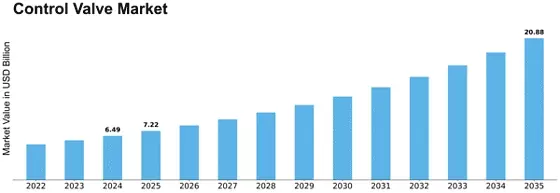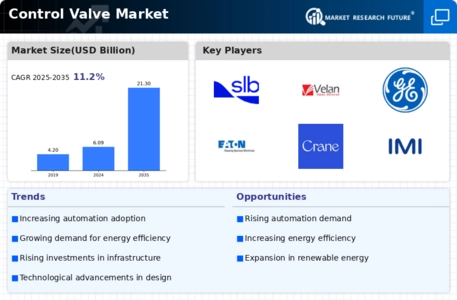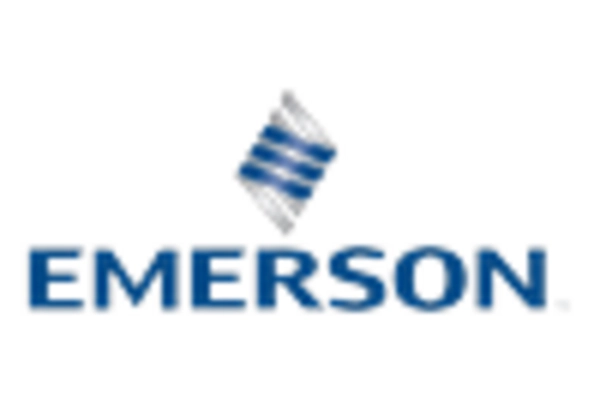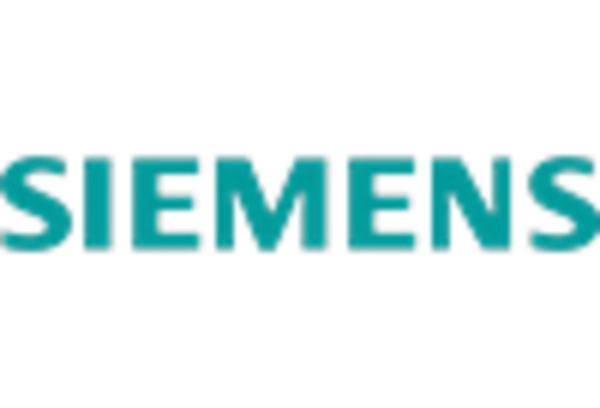Control Valve Size
Control Valve Market Growth Projections and Opportunities
Various factors have a bearing on the control valve market, which shape its dynamics and growth pattern. A crucial aspect is the persistent progress in technology. With industries adopting automation and smart solutions, the need for high-end intelligent control valves with advanced features becomes a matter of great demand. The combination of IoT and technologies with Industry 4.0 has heralded a new epoch in the control valve market, where timely monitoring and regulation are paramount. Market regulators also play an important part in defining the character of control valves. Strict environmental rules and safety outlines developed by regulatory agencies push industries to integrate control valves that meet those standards. As a result, the manufacturers are forced to allocate resources towards research and development of valves that not only comply but also ensure efficient running systems. The international economic situation is another key driver for the control valve market. Industrial activities may be affected by economic fluctuations, trade policies and geopolitical tensions which later result in changing demand for the control valves. During economic recession, industries may concentrate on measures to reduce cost at the expense of capital outlay for automation solutions such as control valves. The control valve industry is strongly influenced by intrinsic market factors such as the prices and amounts of energy available. The demand for control valves in fields like oil and gas, power generation, and petrochemicals may vary according to changeable characteristics of energy prices that impact investments made into projects concerning the production of energy-related products. Moreover, the trend towards renewable energy has brought a new aspect to the market where control valves are of paramount importance in improving renewable system efficacy. The competitive environment and market consolidation are also important drivers. Its control mechanism is well defined by the various players involved in it ranging from established industry giants to emerging startups. The strategies used by companies in this area include mergers and acquisitions, strategic partnerships, as well collaborations with an aim of building its market positioning gaining more products or capitalizing on synergies. Market growth is a continuous force of technological innovation. Among the leading manufacturers, innovativeness is perpetually on demand to meet new requisites of specific companies. These innovations include miniaturization, use of better materials, and more advanced control algorithms that drive the market forward. Customer demands and preferences play an important role in defining the control valve market. Customized solutions that are specific to the end-user’s application and requirements have become a main demand of themselves.










Leave a Comment